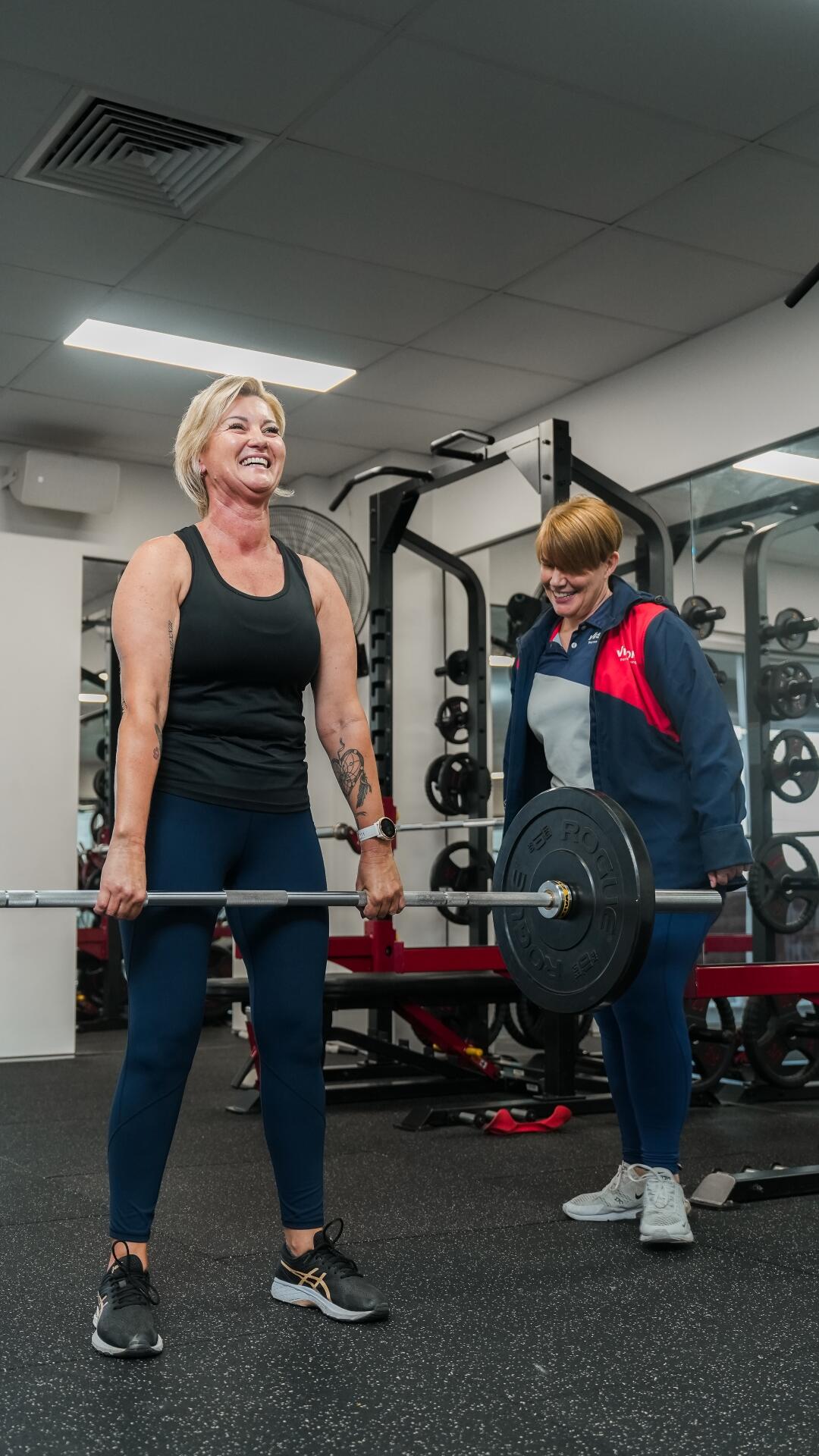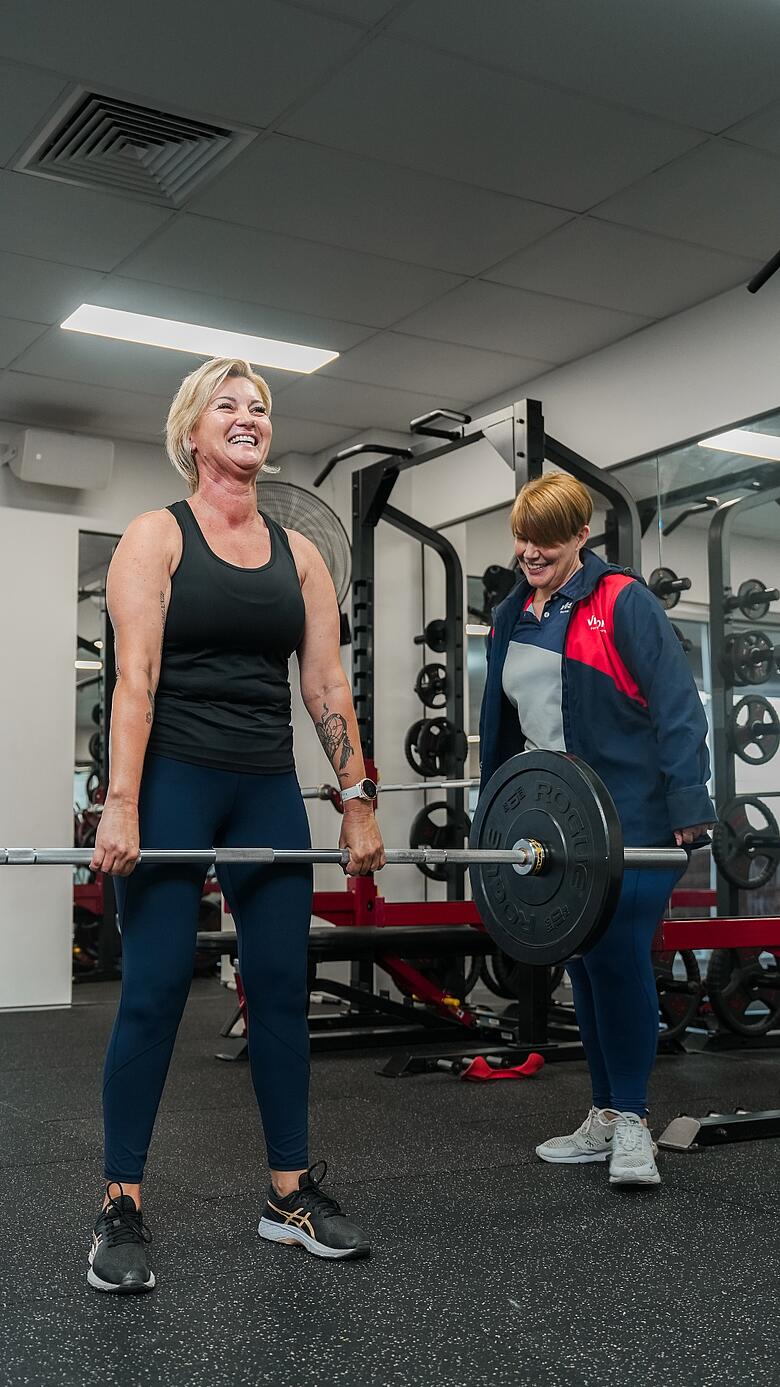At Vision we believe information is power. Your Vision Bioscan uses the latest full body scanning technology from EVOLT 360. In order to provide guidance on your individual results we input height, age and sex data into the machine to provide a reference range or a healthy guide to work within. This reference range appears in the brackets next to your results.
The Bioscan assesses body composition and quantifies visceral fat, the most dangerous fat in the body. Visceral Fat refers to the fat that is hidden and stored around your internal organs. It is important to note that a person. can look quite lean (i.e. low subcutaneous fat) but still have high visceral fat, so it is important to identify all levels of body fat for a complete understanding of individuals' overall body composition and health status.
You know that extra layer of cushioning you can pinch on your belly and in your hips? That is subcutaneous fat. It's the surface-level fat you can see and grab. But underneath that is visceral fat, the cousin that hides deep inside your abdomen, sitting on the couch next to your vital organs like it's Netflix and chill.
Visceral fat increases when you overindulge frequently on junk food, do little to no exercise, and are under high levels of stress. Add in poor sleep and too much alcohol, and you've got the perfect storm.
Genetics also play a sneaky role, making it easier for some people to accumulate this nasty type of fat. Overall, genetics is the gun, and the environment is the trigger. You can't change one but you can definitely change the other.
When your visceral fat is in the elevated range, it sends out inflammatory signals in your body. This fat can wrap around your important organs like the liver, pancreas, and intestines. It messes with your hormones, raises blood pressure, and makes you more insulin-resistant, which can lead to type 2 diabetes, heart disease, cancer, and a whole host of other health problems.
The visceral fat analysis is measured between a score of 1-20 with 1-9 being within a balanced range based on accepted normative data. For general guidelines to improve and lower your visceral fat level, ensure that you are following a nutritious eating plan that includes high alkaline foods such as green, cruciferous vegetables (or supplement with a good quality Greens supplement) as well as ensuring sufficient amount of lean protein intake and good quality fats. Lowering stress situations can be difficult, however cortisol reduction supplementation may be used to assist also.
The healthy range of visceral fat is getting as close to 0 as possible, with an ideal target of being in the optimal green range of 1-5. Level 6-9 is in the yellow which is in the balanced range, with anything 10 and over being in the red and over range which is an area that needs to be a priority and improved on.
Waist-to-Height Ratio: Some health experts also suggest using the waist-to-height ratio as a more accurate measure. The recommendation is that your waist circumference should be less than half your height.
A healthy ratio is generally considered to be:
- Men: Less than 0.90
- Women: Less than 0.85
The way to reduce Visceral Fat
Eat better (smarter)
Eating unprocessed foods while getting adequate amounts of protein is crucial when losing visceral fat. This is an important distinction because you don't want to lose weight. You want to lose fat while keeping as much muscle as you can. Ditching processed foods and refined sugars and prioritising nutrient-dense whole foods is key.
This could look like eating a high-protein meal, such as a protein smoothie or an egg omelette for breakfast. Lunch could combine single-ingredient proteins, legumes, veggies, and carbs. While dinner could be a piece of meat, along with veggies and a carb source like potatoes or even rice.
Lift Weights and do cardio
A combination of weight lifting/ resistance training and moving your body for cardiovascular fitness is the ultimate exercise plan for reducing your visceral fat levels. Stop doing random workouts which will hinder you from getting results. By doing a minimum of two or even three 30-minute weight training sessions a week, focusing on getting stronger in the same exercises using progressive overload, while getting at least 8k steps a day, which equals one 30-minute walk a day will be transformative.
Something to note: One of the best ways to lose visceral fat through exercise is through high-intensity interval training, but due stress levels and the stress it can put on your joints and body, it’s recommended you opt for a more low-intensity approach when taking things into consideration like age, injuries and limitations.
Stress
Stress attracts fat, it is a fat magnet. It triggers the release of cortisol, a hormone that tells your body to store fat, especially around your belly. Stress makes you crave junk food, leading to weight gain. Chronic stress disrupts sleep and metabolism, worsening the situation. It's a double-whammy: it increases your food intake and promotes fat storage.
Two aspects of leading a healthy lifestyle can actually cause stress if you don’t actively manage them and factor them in.
Meal timing: not planning and being prepared with your food compounds with a mega-stressful life, which results in nighttime eating binges, snacking and overeating. This simple switch to being planned and prepared helps manage stress and removes more brain-power needed for decision making throughout the day and eliminates nighttime snacking.
Exercise timing: For the majority of us who are scarce on time, scheduling your workouts and doing your workouts/training at the beginning of the day while adding in a "reset" walk after lunch or dinner or while the kids are at soccer training is really effective. This helps approach your day more calmly, and the walk helps reset your mind for the rest of the day plus ticks off your step count. The key here is scheduling that exercise time in your day. If you don’t have someone waiting for you, chances are you won’t do it because something else will pop up and get in the way.
Reduce or eliminate alcohol
When trying to reduce visceral fat, you must set up an environment that supports it.
Alcohol is empty calories that lead to weight gain without any nutritional benefits. When you consume it, your body prioritizes processing the alcohol before any other calorie. Alcohol also increases cortisol levels, promoting visceral fat storage. In addition to this, drinking often pairs with poor food choices, adding to the calorie surplus. Aim to limit drinking to a glass or two on the weekends. You’ll likely find that you feel so much better, and you might even decide to forgo it for good!
Prioritise sleep and have boundaries with your phone
Poor sleep disrupts your hormones, increasing ghrelin (which stimulates hunger) and decreasing leptin (which signals fullness). It also raises cortisol levels, leading to visceral fat storage. Additionally, fatigue makes you less inclined to exercise and more likely to crave unhealthy foods. Set a time limit for social media apps; this will interrupt your scrolling and prompt you to decide whether to continue or stop. Additionally, set your phone to automatically switch to Do Not Disturb mode, silencing all notifications at least 30 minutes before bed. This strategy is a game changer for reducing phone usage and going to bed earlier.
You don’t need a six-pack to be healthy; the goal is to get your body to a state where you can avoid and prevent diseases. Reducing visceral fat is a crucial part of this.
Remember to be patient with yourself. Just as Rome wasn’t built in a day, your visceral fat won’t disappear in a week. With enough time, you’ll eliminate it and reach a level of health your body will be grateful for.

